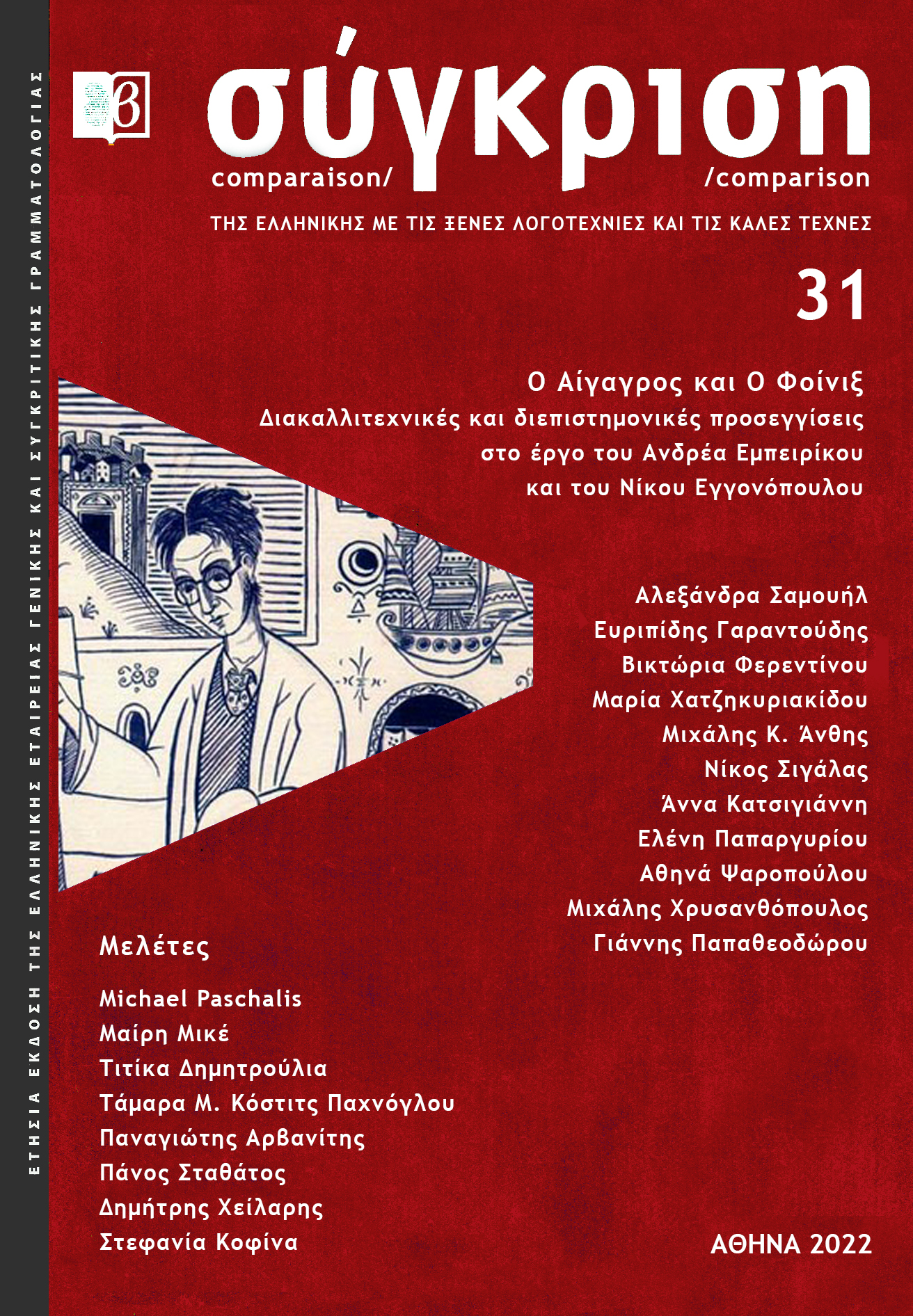ΜΙΧΑΛΗΣ Κ. ΑΝΘΗΣ, Κώδικες έμφυλης αναπαράστασης στο εικαστικό έργο του Νίκου Εγγονόπουλου. Διακειμενική προσέγγιση
Abstract
Decoding gender representations in some paintings of Nikos Engonopoulos. An intertextual approach
This paper approaches the narrative codes Nikos Engonopoulos used to present, in some of his paintings, the theme of gender representation with the conflicting extensions at an ideological and social level. His surrealist view is potentially a form of denouncement and subversion of dominant stereotypes and traditional meanings of the gender roles of his heroes or heroines. The paintings, which are selectively presented in this paper, reveal Engonopoulos's consistency towards the ethical, ideological, and social principles and ideals of surrealism as well as his sensitivity toward issues related to gender relations. A starting point originating from ancient Greek mythology that stimulates his imagination is the concept of metamorphosis which is dominant in Greek myths. From the cycle of Ovid's Metamorphoses, Engonopoulos selects two myths and creates his surrealistic narrative. The first painting is entitled “Io” (1942) and the second is “Nestor” (1958). Ηorned “Io” (Selene) in Engonopoulos's painting, through its Ovidian origins, incorporates amatory, social (gender violence), aesthetic and psychoanalytic symbolism. Engonopoulos also chooses and paints in the second painting the figure of Nestor mediated, however, by the poetic writing of Ovid. In reality, Eggonopoulos tells the story of Caeneus, originally a woman named Caenis, which has all the characteristics of paradox, and irrationality, and is the story of the transformation of a woman into a man. The visual narrative through which Engonopoulos deconstructs gender stereotypes is analyzed in two more of his works. The first bears the misleading title “Chalkis” (1955). In this painting, Engonopoulos depicts Lykophron, a poet from Chalkis but in reality, he is talking about his work entitled “Alexandra” (Kassandra), a poem with cryptic references. Based on relevant allusions to the latest Greek literature, the codes of gender representation are finally identified in Engonopoulos's work entitled “La fanciulla di Zante” (1952), which is a reference to the lyrical poem “He Pharmakomeni” by Dionysios Solomos. Conclusively, the paintings analyzed in this paper, in addition to the scope of Engonopoulos's reading literacy, also reveal his multi-layered visual discourse.
Article Details
- How to Cite
-
Άνθης Μ. Κ. (2022). ΜΙΧΑΛΗΣ Κ. ΑΝΘΗΣ, Κώδικες έμφυλης αναπαράστασης στο εικαστικό έργο του Νίκου Εγγονόπουλου. Διακειμενική προσέγγιση. Comparison, 31, 51–62. https://doi.org/10.12681/comparison.31273
- Issue
- Vol. 31 (2022)
- Section
- Articles

This work is licensed under a Creative Commons Attribution-NonCommercial-ShareAlike 4.0 International License.
Authors who publish with this journal agree to the following terms:
- Authors retain copyright and grant the journal right of first publication with the work simultaneously licensed under a Creative Commons Attribution Non-Commercial License that allows others to share the work with an acknowledgement of the work's authorship and initial publication in this journal.
- Authors are able to enter into separate, additional contractual arrangements for the non-exclusive distribution of the journal's published version of the work (e.g. post it to an institutional repository or publish it in a book), with an acknowledgement of its initial publication in this journal.
- Authors are permitted and encouraged to post their work online (preferably in institutional repositories or on their website) prior to and during the submission process, as it can lead to productive exchanges, as well as earlier and greater citation of published work (See The Effect of Open Access).



